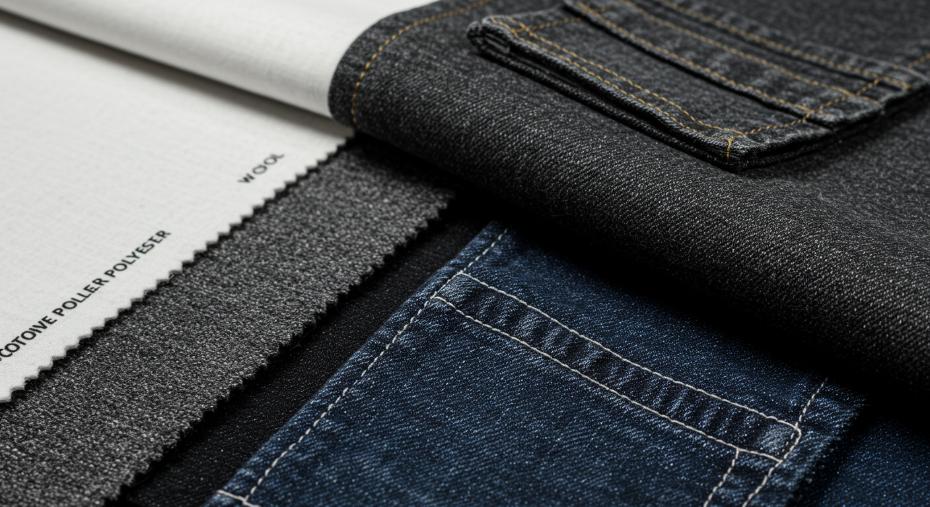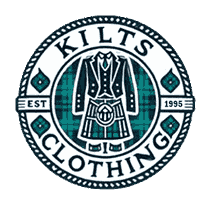Material Matters: Choosing the Best Fabric for Your Women’s Utility Kilt

When choosing a women's utility kilt, one of the most important decisions you'll make is selecting the right fabric. Depending on your intended activities and personal style, the material can influence how comfortable, functional, and durable the kilt is. Whether you're wearing a utility kilt for a casual day out, a rugged hiking trip, or a semi-formal event, the fabric choice will significantly affect how well it suits your needs. In this guide, we'll explore the most common fabrics used for utility kilts and provide tips for selecting the best one for your lifestyle.
1. Why Fabric Choice is Essential for Utility Kilts
The fabric of your utility kilt isn't just about appearance—it directly affects your comfort, flexibility, and the kilt's overall lifespan. Different materials offer different benefits, from breathability and softness to durability and weather resistance. For example, a lightweight cotton kilt may be perfect for summer outings. At the same time, a heavier wool blend could provide warmth during colder months. The key to choosing the right material is to balance practicality with style based on how and where you plan to wear your kilt.
2. Common Fabrics Used in Women's Utility Kilts
a) Cotton and Cotton Blends
Cotton is one of the most popular fabrics for womens utility kilt due to its comfort and breathability. Cotton kilts are soft against the skin and ideal for everyday wear, especially in warm or moderate climates.
- Ideal for: Casual settings, warm weather, and light outdoor activities.
- Benefits: Breathable, lightweight, and easy to maintain.
- Drawbacks: Not as durable as heavier fabrics like denim or polyester in rugged environments.
Cotton blends, which combine cotton with synthetic materials like polyester, offer added durability without sacrificing comfort. These blends can also reduce shrinkage and wrinkles, making them low-maintenance.
b) Polyester or Poly-Cotton Blends
Polyester and poly-cotton blends are known for their strength, wrinkle resistance, and moisture-wicking properties. Kilts from these fabrics are great for active or outdoor lifestyles because they dry quickly and can withstand heavy use.
- Ideal for Hiking, travel, and activewear.
- Benefits: Quick-drying, wrinkle-resistant, and durable.
- Drawbacks: It can feel less breathable in extremely hot conditions than natural cotton fabrics.
Poly-cotton blends strike the perfect balance between comfort and durability, making them suitable for women who need women's utility kilt that can withstand casual and demanding activities.
c) Denim
Denim utility kilts are perfect for those looking for a rugged yet stylish look. Denim provides excellent durability and can be dressed up or down, depending on the occasion.
- Ideal for Casual outings, festivals, and streetwear.
- Benefits: Sturdy, long-lasting, and fashionable.
- Drawbacks: Heavier than cotton or polyester, which may feel restrictive during high-mobility activities.
Denim kilts are particularly popular in urban settings. They offer a chic and edgy look while being functional enough to withstand regular wear.
d) Leather
Leather utility kilts are a standout option for a bold, luxurious look. Leather is known for its strength, water resistance, and high-end aesthetic, making it suitable for formal or statement outfits.
- It is ideal for Semi-formal events, evening wear, or edgy looks.
- Benefits: Durable, sophisticated, and weather-resistant.
- Drawbacks: It requires special care and can be less breathable than cotton fabrics.
Leather kilts can be paired with simple tops for a dramatic effect or dressed with elegant accessories for more formal occasions.
e) Wool and Wool Blends
Wool is a traditional fabric that provides natural warmth and insulation, making it ideal for cooler climates. Wool-blend utility kilts combine the softness of wool with synthetic fibers for added durability.
- It is ideal for Cold weather, outdoor wear, and semi-formal occasions.
- Benefits: Warm, moisture-wicking, and naturally breathable.
- Drawbacks: It can feel heavy and may require dry cleaning for maintenance.
Suppose you're planning to wear your utility kilt in autumn or winter. A wool option will keep you warm without sacrificing comfort.
3. Choosing the Right Fabric Based on Activity and Environment
a) Everyday Casual Wear
For daily wear, cotton, cotton blends, and denim are great choices. They provide comfort and are easy to style with T-shirts, sneakers, or casual accessories.
b) Outdoor and Adventure Activities
When venturing outdoors, opt for polyester or moisture-wicking blends that handle dirt, sweat, and weather changes. These fabrics dry quickly and are less likely to rip or stain.
c) Semi-formal or Professional Settings
Leather, wool, or high-end cotton fabrics work best for business-casual or formal occasions. These materials offer a more polished look, especially when paired with blouses, blazers, or heels.
4. Balancing Comfort, Durability, and Style
a) Comfort
If you prioritize comfort, choose breathable fabrics like cotton or lightweight blends. These fabrics feel soft against the skin and are ideal for all-day wear.
b) Durability
For rugged use, opt for denim, polyester, or leather. These fabrics withstand heavy use, making them ideal for outdoor or high-activity environments.
c) Style
Leather and wool provide a sophisticated look, while denim and cotton create casual, laid-back styles. The fabric you choose can help set the tone of your overall outfit.
5. Maintenance and Care for Different Fabrics
- Cotton: Machine washable; air-dry or use low heat to prevent shrinking.
- Polyester: Easy to wash and quick-drying; avoid high heat.
- Denim: Wash inside out to prevent fading; air-dry for longevity.
- Leather: Spot clean with a damp cloth and condition regularly.
- Wool: Hand wash or dry clean; air-dry to maintain its shape.
6. Custom Fabric Options for Utility Kilts
Some retailers offer custom utility kilts, allowing you to choose fabrics that fit your style and specific needs. Custom options for enhanced performance may include waterproof coatings, thermal linings, or breathable materials.
7. Making the Right Fabric Choice: Quick Recommendations
- For comfort and breathability: Cotton or lightweight blends.
- For outdoor durability: Polyester or poly-cotton blends.
- For stylish, formal occasions: Leather or wool.
- For rugged, everyday wear: Denim.
Conclusion
Selecting the best fabric for your women utility kilts can significantly impact its comfort and versatility. By understanding the characteristics of each material, you can choose a kilt that aligns with your activities, climate, and personal style. Whether you prefer the breathability of cotton, the durability of polyester, or the elegance of leather, the right fabric will ensure you look and feel your best. Explore your options, and invest in a utility kilt that meets all your needs.


